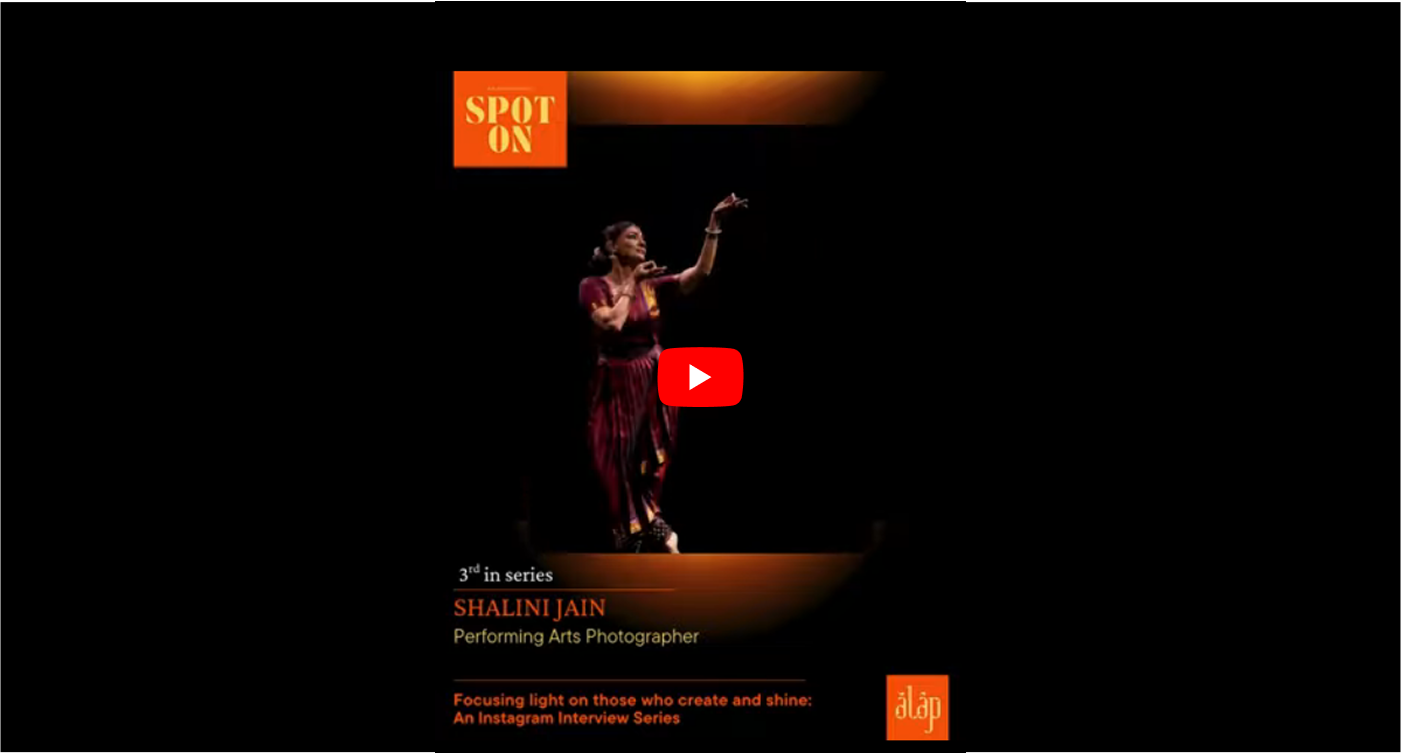Shalini Jain
Performing Arts Photographer

Shalini, a photograph in the context of a performance that is dynamic is often a static, a moment, right? What goes into waiting and finding that exact moment? Talk to us about that process of waiting, and what happens when you find it?
Absolutely! Dance is dynamic, and photography is static. But in performance photography, it's that stillness that breathes and tells a story. Finding that moment involves a lot of listening — not just with the ears, but with the eyes, the body, and a certain instinct.
When I am shooting, I tune into the rhythm, feel the energy in the room, and observe the ebb and flow of movement. Sometimes, I can sense when a moment is about to unfold — the peak of a pure dance (nritta) sequence, the completion of a mudra, or a fleeting glance during an abhinaya performance and I wait for it. Other times, it takes me by surprise, and I respond in the instant.
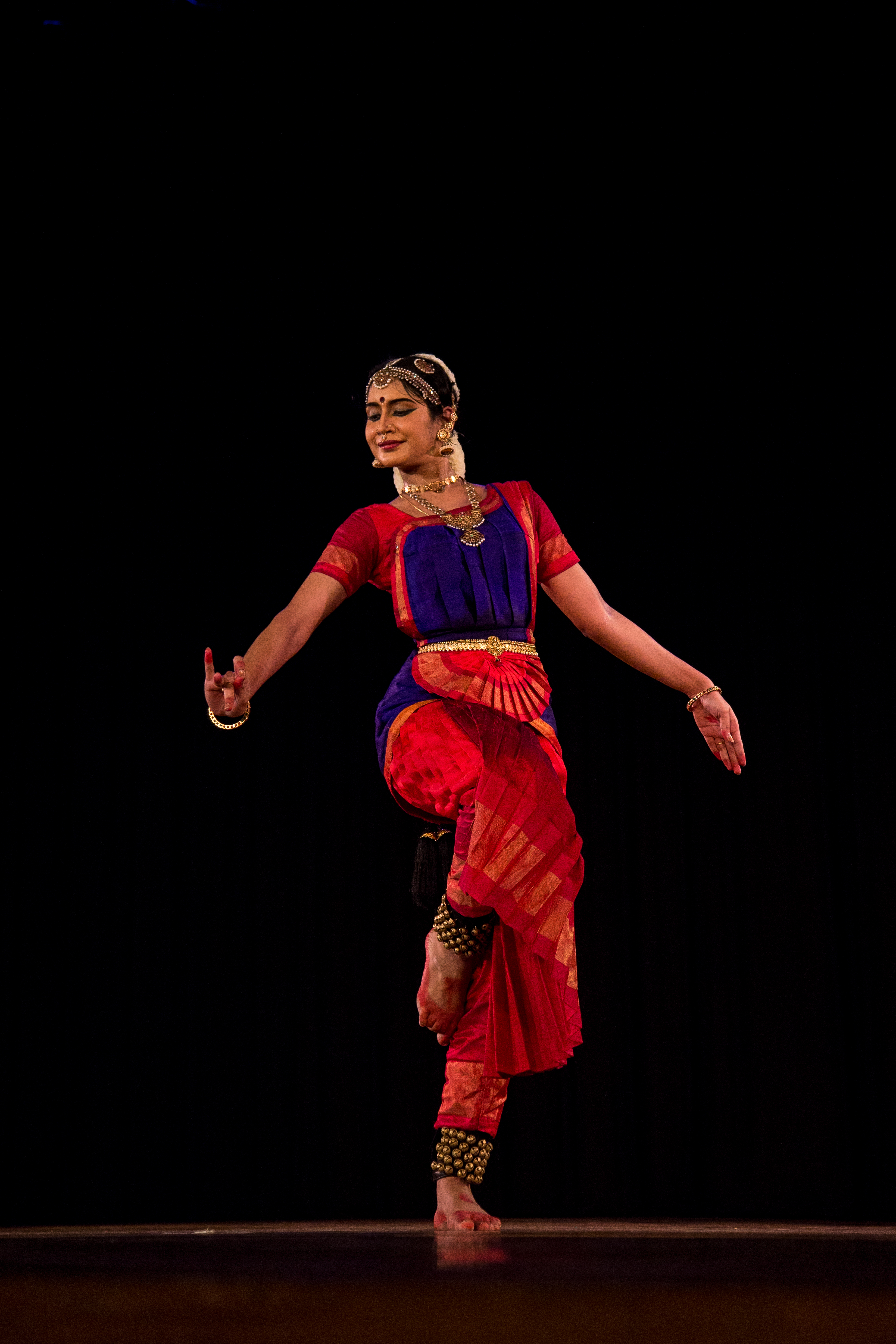
Aishwarya Balasubramanian (Bharatanatyam) @ Music Academy Dance Festival - 2015
Either way, it’s about being fully present. And when I do catch that moment, there’s a quiet certainty like I’ve held on to something that was just about to vanish, and made it last longer. Something ephemeral, saved for posterity.
Talk to us a bit about how, you personally, respond to dance? Is that response often the starting point of your photographic journey with regard to a performance?
Any art form begins with feeling — it’s shaped by how the artist responds to a moment, an idea, or even their own inner world. For me, it’s the same with photography. I respond to dance emotionally-not just to what the dancer is doing technically but to what the movement is “saying”.
That emotional response becomes the foundation of how I photograph. It shapes how I see, what I look for, and the moment I choose to press the shutter.
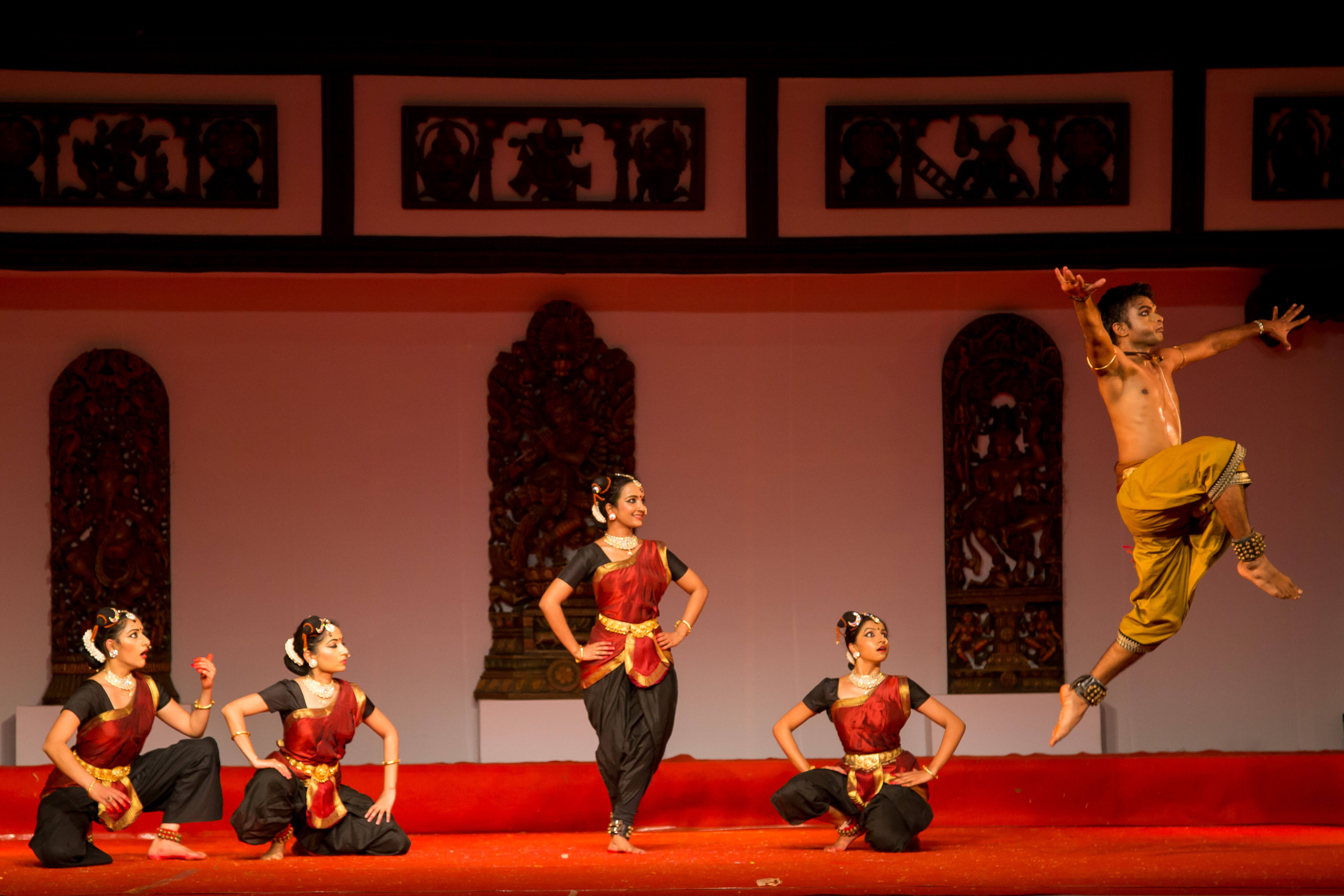
Punyah Dance Company (Bharathanatyam) - Pancha Vaktram @ Udupi Paryaya- 2016
Even before I lit the camera, I’m already watching, understanding, absorbing what’s unfolding. Is the dancer rooted or flying? Is the mood intense or gentle? That response — to energy, to rhythm, to feeling is always the starting point. It’s in that space that the camera becomes an extension of my reaction.
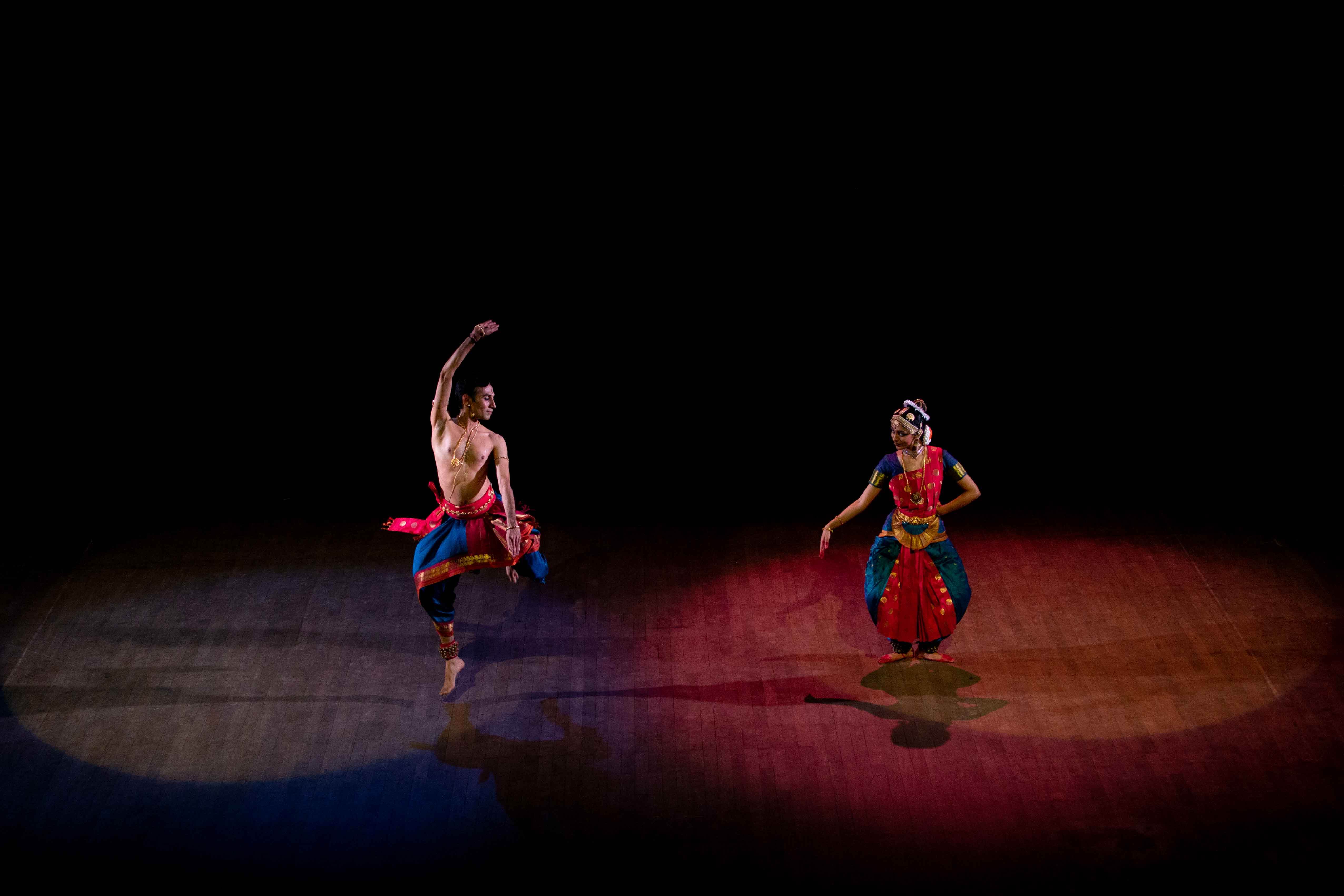
Chithkala School of Dance (Bharatanatyam) - Ardhanareeswarar @ Diya Performing Arts dance Festival - 2018.
So yes, for me, it’s never the gear or the technicalities that lead; it’s that immediate emotional connection to the performance.
Do you believe as a photographer you also need to “feel” for the dance? How does that feeling enhance your experience and therefore the photography?
Yes, I really believe you have to feel for the dance. When a dancer is performing on stage, I often feel like I’m performing alongside them — with my camera. Without that emotional connect, the images might be technically fine, but they won’t carry any real weight. Dance isn’t just about movement, it’s layered with emotion, intent, and character. And if I don’t connect with that, I feel like I’m only skimming the surface.
When that emotional spark is there — when something in the performance resonates with me — I begin to sense the why behind the movement, not just the how.
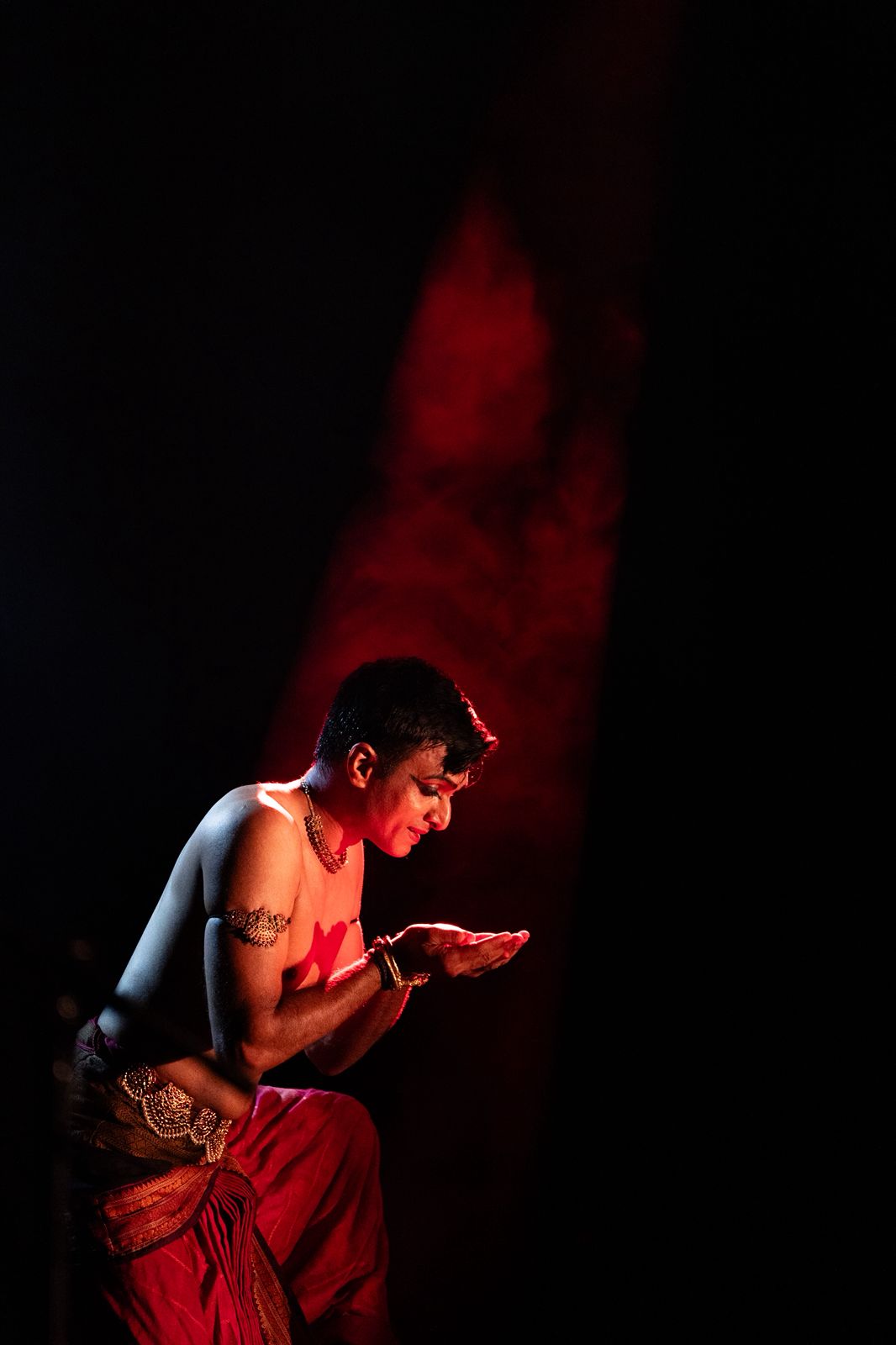
Parshwanath Upadhye (Bharatanatyam) - Punyah Dance Festival - 2025
That awareness shifts everything. It guides the way I observe, what I choose to focus on, where I stand to capture a particular moment and even what I choose not to photograph. It stops being just an act of photography and becomes a way of responding to what’s unfolding — an act of holding that experience in a single frame. And I think that connection shows in the final image. There’s an atmosphere, a mood, a sensitivity — something that, hopefully, allows the viewer to feel it too.
You didn’t formally train in photography, right? How did photography, performance photography in particular, happen to you?
I’m very much an accidental photographer. I started out as a software professional, but that stint didn’t last very long. After that, I was involved in the family business but over time, that started to feel quite monotonous.
Photography came into my life when I decided to take a complete break from everything I was doing.
I remember being on Facebook and coming across these candid wedding photographs — they looked so lively and natural. Until then, I had only known wedding photography to be very stiff and posey. Out of sheer curiosity (and a bit of impulsiveness!), I wrote to one of the photographers and asked if I could tag along for a shoot.
And just like that, I found myself hopping from one wedding hall to another, watching over my new friend’s camera bag. I didn’t even own a camera at that point.
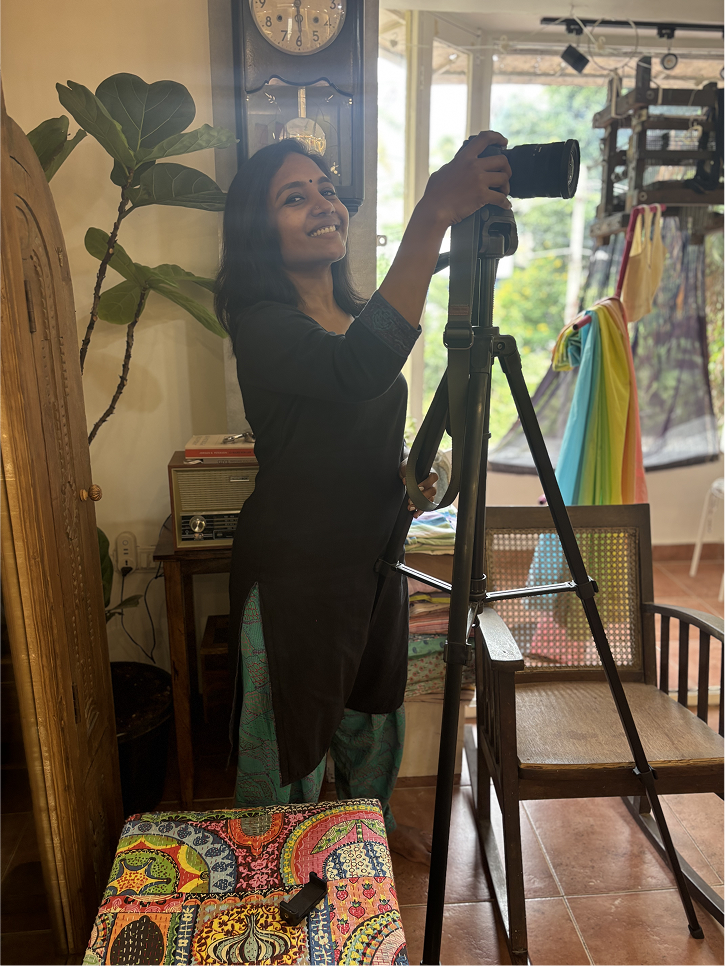
Shalini @ Seven Sarees Studio in Bangalore
Eventually, I got one and like any beginner, I was eager to shoot everything: weddings, events, portraits of friends, even insects! I was just excited to explore the medium.
Around that time, in 2012, my cousin got me a season ticket to the Music Academy’s Dance Festival. I didn’t know it then, but that was a turning point. I spent as much time as I could there, taking pictures-not just as a photographer, but as an audience member, discovering dance.
That season opened up something in me. I saw performances across styles — Bharatanatyam, Kuchipudi, Odissi, Kathak, Yakshagana — and I was completely in awe. I wasn’t thinking about technique or getting perfect shots. I was just moved. That sense of wonder — of how movement can carry emotion, evoke something deep and that has stayed with me ever since. And it’s what keeps drawing me back to photographing dance, even today.
“Dance is unpredictable,and some of the most evocative images happen in unscripted moments”
Over time, and having spent more than a decade as a performance photographer, do you believe that getting to know the “human” in the artiste helps you photograph the artiste better or?
Absolutely. For me, it’s not just about knowing when a dancer might pause or strike a pose — it goes much deeper than that. Getting to know the person behind the performance helps me tune in to their energy, their rhythm, and what makes their movement feel truly their own.
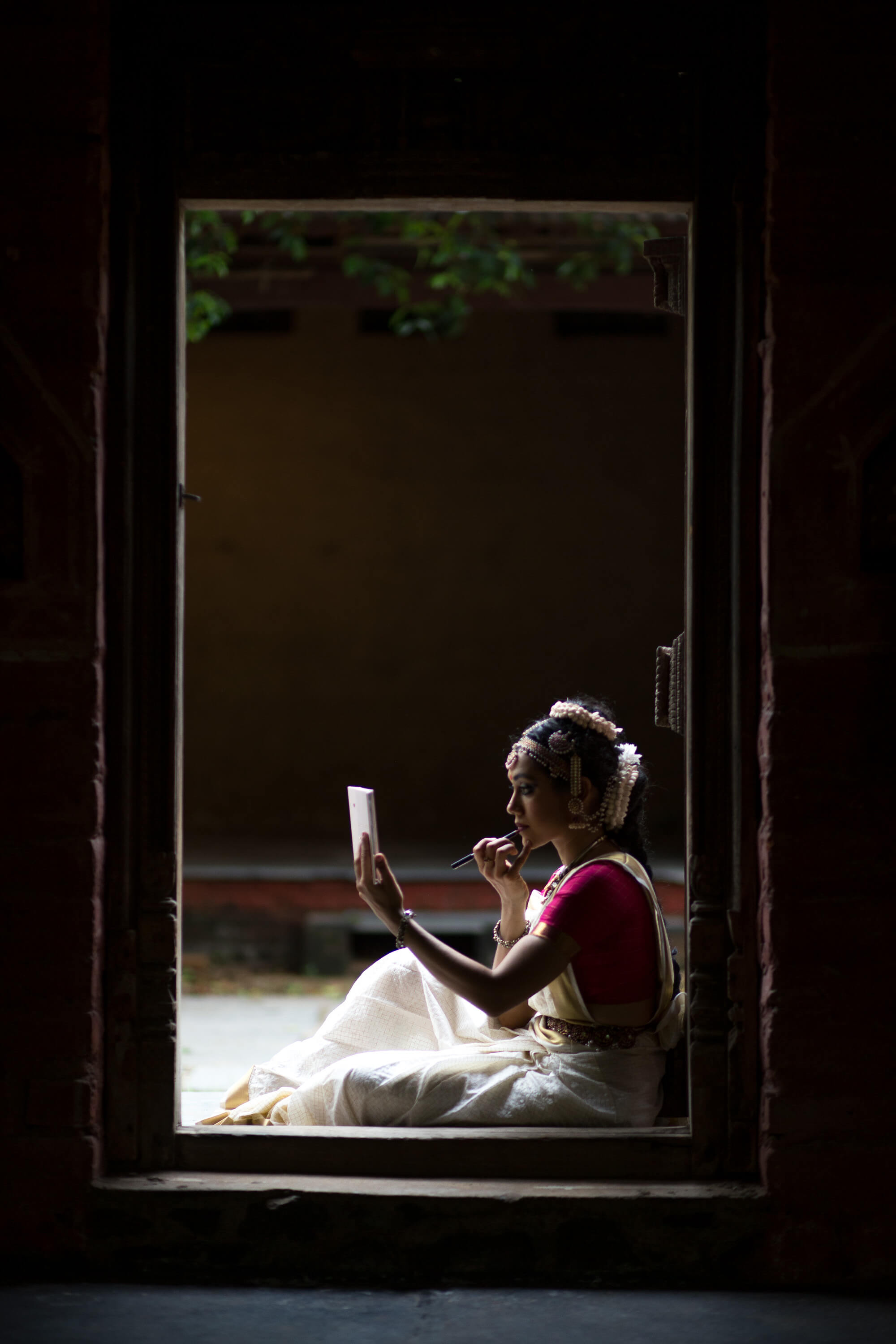
Shweta Prachande - Samvada - 2020
I’m a quiet observer by nature. I pay close attention to how they speak, how they gesture, how they carry themselves even when they’re not performing. So when they raise an arm or take a leap on stage, I already have a sense of the shapes and patterns they’re likely to create. That familiarity allows me to anticipate and capture not just a clean image, but one that feels personal and true to them.
Over the years, I’ve had long working relationships with some dancers-and those naturally build a kind of unspoken understanding. But even in newer collaborations, I try to spend time with them or attend rehearsals. It’s my way of beginning a relationship and of understanding who they are beyond the stage. Because when there’s that connection, the photograph becomes more than just a document of a performance. It becomes a portrait of the person within the artiste.
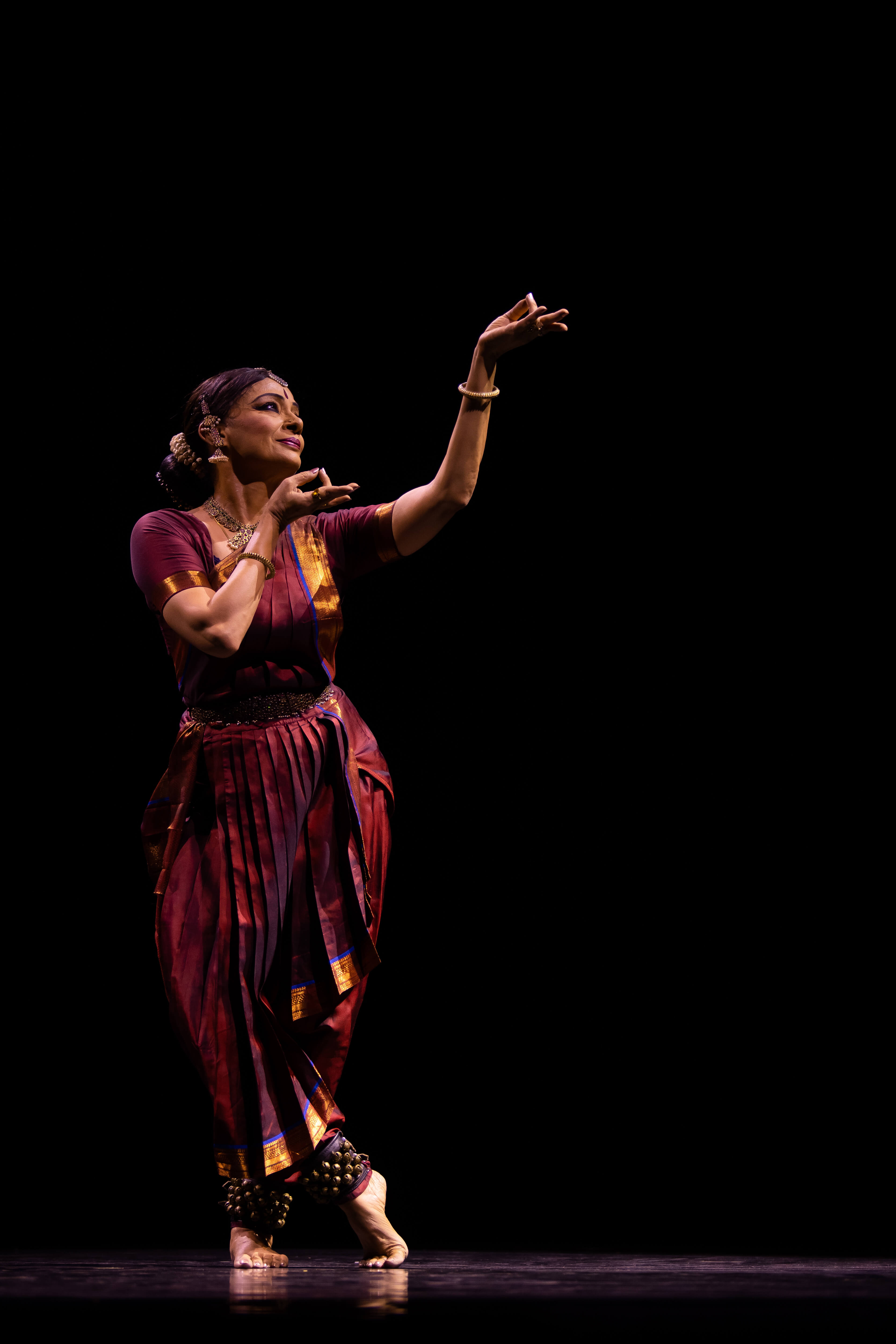
Malavika Sarukkai - Anubandh - 2022
Artistes have different personalies, right but you have a certain style and aesthetic for your photography, right? How does your aesthetic - if at all - need to change to be able to “reveal” and “celebrate” the artiste you shoot?
Yes, I do have a visual style that I naturally gravitate towards — one that values grace, balance, and emotional nuance. But I don’t believe in applying a one-size-fits-all approach, especially in a field as layered as dance. Every artiste brings something distinct, and I try to respond to that.
For instance, when I photograph an eminent artiste like Guru Bijayini Satpathy, there’s a certain command and fluidity in her movement, a refinement that’s been shaped over years of deep engagement with the form. When I photograph her, my aesthetic instinct is to highlight that elegance, that sculptural quality she carries even in the subtlest gesture. It’s about capturing beauty with a certain quiet reverence.
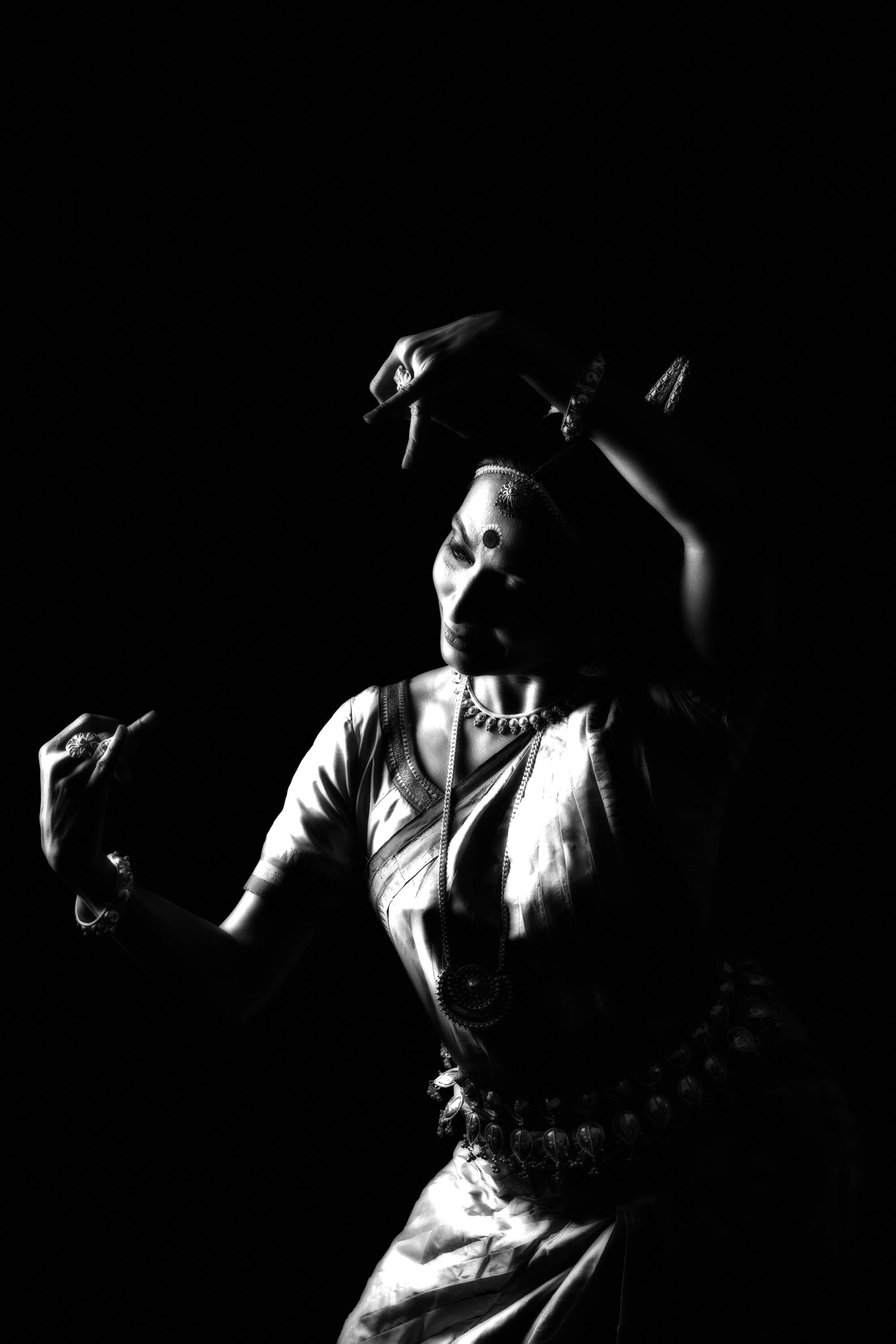
Bijayini Satpathy’s Studio Shoot (Odissi) - 2018
Now contrast that with photographing a young child artiste — their energy is often unfiltered, spontaneous, full of wonder. Here, I find myself responding to that innocence and curiosity. My visual language doesn’t necessarily change, but it shifts. It bends a little to honour who is in front of the lens.
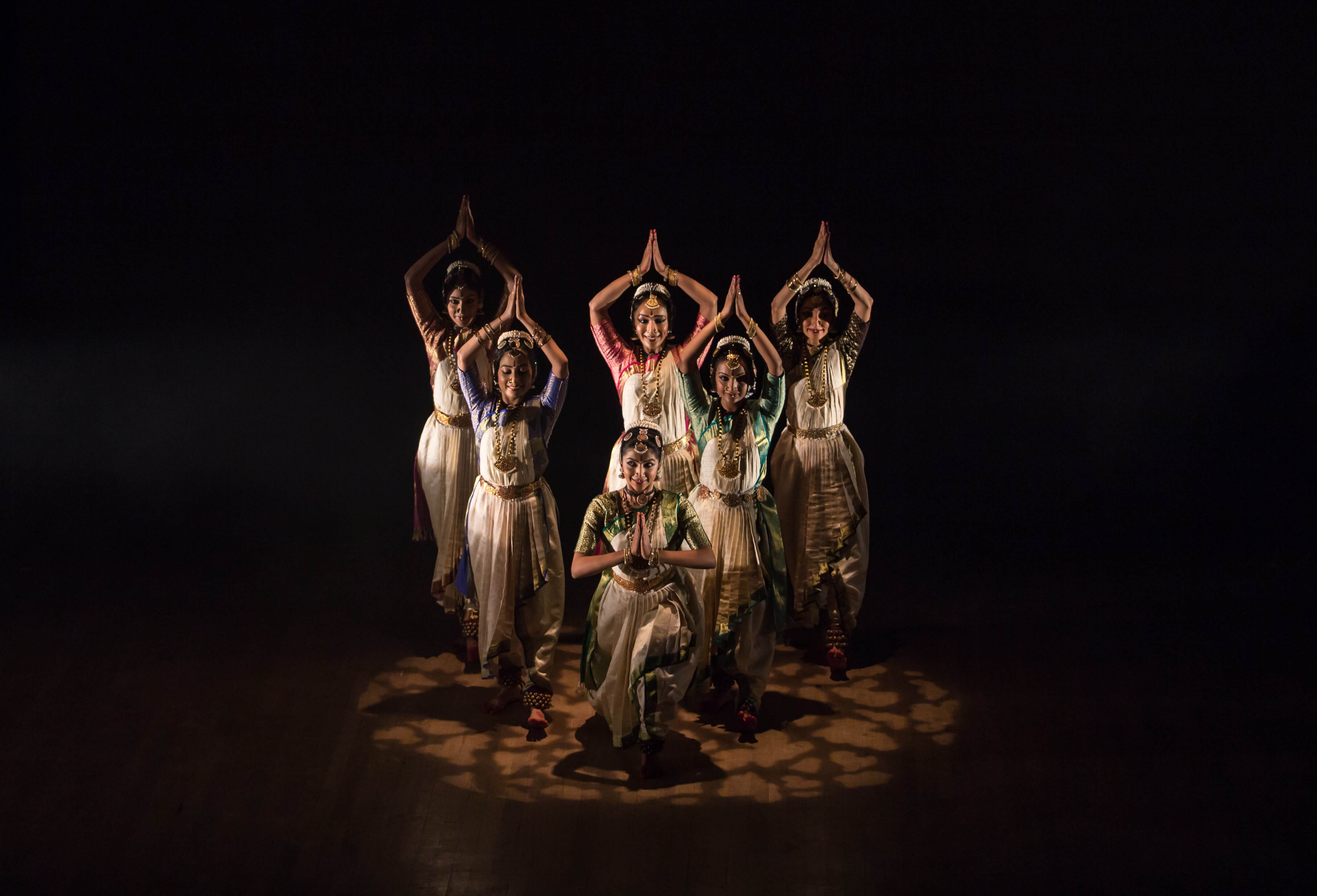
Rasika Arts Foundation (Bharatanatyam) - Maanini - 2015
So in that sense, it’s not about compromising on my aesthetic, but about allowing it to be flexible enough to accommodate and celebrate the personality of the dancer. My role is to recognise what’s true to them and let that come through in the images.
How do you prepare for a performance in photography? What do you do leading up to it?
Every performance shoot begins for me well before I lit the camera. The preparation is often more emotonal and intuitive than technical.
If I know the artiste or the production, I try to gather as much context as possible-speak to the dancer, understand the theme or narrative, and if I can, attend a rehearsal. If I’m photographing an Arangetram and walking in without prior familiarity, I make it a point to study the line-up in advance. That gives me a sense of the flow — the shifts in mood, the quieter stillness, the bursts of energy. It helps me anticipate and respond more intuitively in the moment.
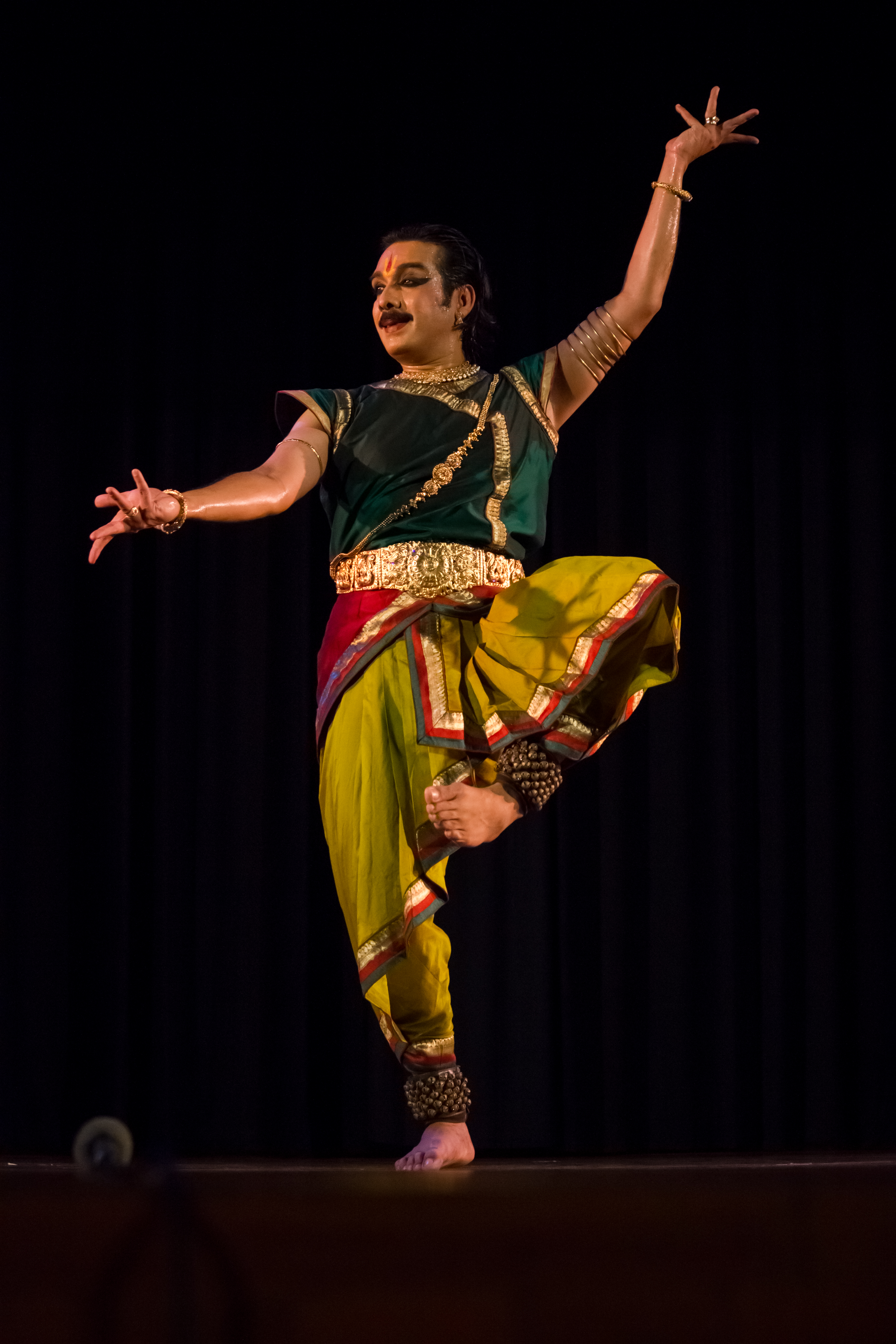
Vineeth Radhakrishnan (Bharatanatyam) - Music Academy Dance Festival - 2014
I also take stock of the venue. Lighting conditions can vary greatly, so I prepare for the practical side of things-where to position myself based on the order of items, what gear to carry, whether to use prime or zoom lenses, and so on. But beyond that, I try to stay alert and instinctive. Dance is unpredictable, and some of the most evocative images happen in unscripted moments. There are times when a dancer improvises on stage in a way that never appeared in rehearsal-and that’s when being fully present makes all the difference.
So for me, preparation is about tuning in — to the dancer, to the space, to the rhythm of the evening, and to myself. It’s about arriving not just with equipment, but with attention and sensitivity to what’s unfolding.
You shoot many dance styles, right? What dance styles have you shot; which ones have you enjoyed; has shooting some styles been challenging?
Yes, I’ve had the chance to photograph a wide range of classical, folk, and contemporary dance styles — Bharatanatyam, Odissi, Kuchipudi, Kathak, Mohiniyattam, Kathakali, Manipuri, Yakshagana, Kudiyattam, Chhau, Sattriya, Therukoothu, Kandyan, Latin American, and contemporary works that often draw from traditional vocabularies. Each form comes with its own rhythm, texture, and language of movement — and that variety is something I find both exciting and deeply enriching.
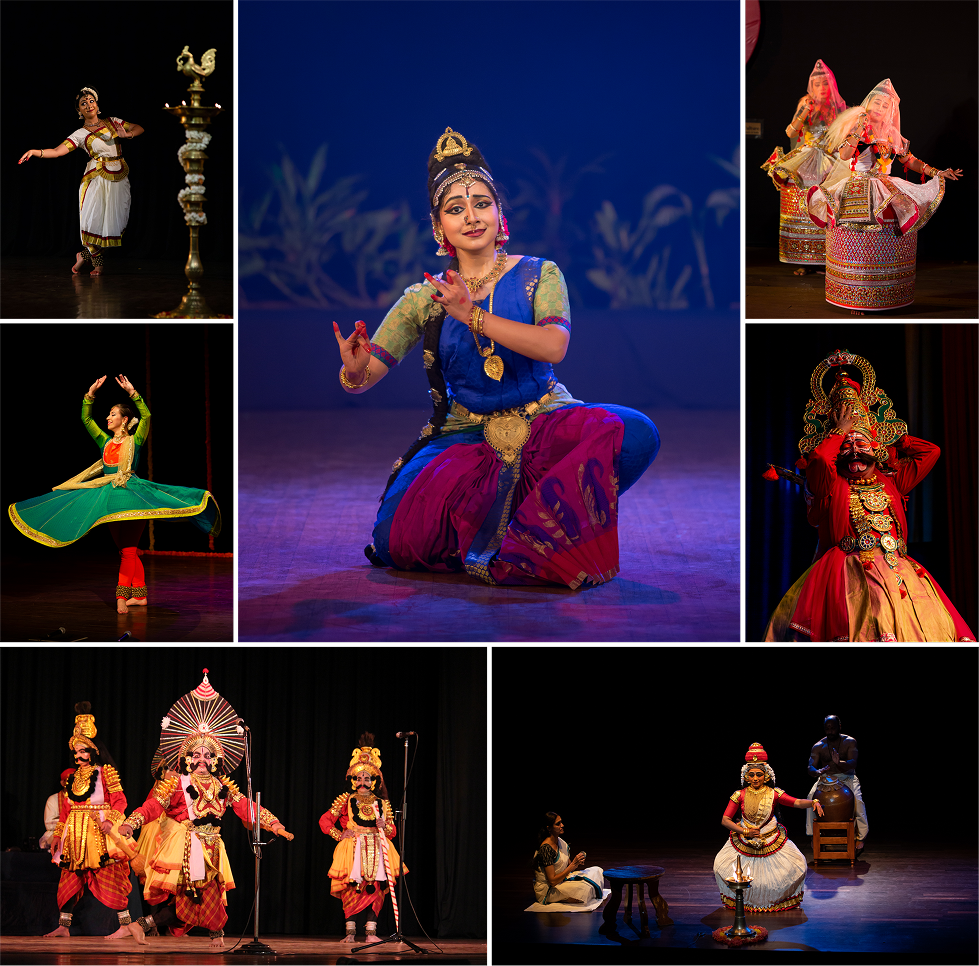
Clockwise from the centre: Prateeksha Kashi (Kuchipudi) - Ganga to Kaveri @ Yagnaraman July Fest - 2017, Jagoi Marup and Group (Manipuri) @ Dance Jathre - 2015, P Rajagopal (Kattaikkuthu) - Karnatic Kattaikkuttu - 2019, Kapila Venu (Koodiyattam) - Know Your Artist - 2023, Sri Idagunji Mahaganapati Yakshagana Mandali (Yakshagana) @ Music Academy Dance Festival - 2012, Kinga Malec (Kathak) - 2020, Malavika Menon (Mohiniyattam) - Rasoham - 2018.
Bharatanatyam and Odissi are styles I’ve spent the most time with. I’ve grown familiar with their visual rhythm-the pauses, the glances, the arcs of movement that announce themselves just before they bloom. Odissi in particular draws me in with its circularity and lyrical grace; there’s a softness even in its strength that’s a joy to frame. Kathak challenges me in a completely different way-the speed of the chakkars, the sudden shifts in tempo, the stillness of a glance held mid-spin. It took me time to learn how to photograph it — to read the cues in the music and anticipate the exact beat when something kinetic or poignant is about to unfold.
Chhau, on the other hand, demands a different way of seeing altogether. With its roots in martial and tribal traditions, and the use of masks in some styles, Chhau is highly physical and dramatic. Facial expressions are oen absent, so the narrative plays out entirely through posture, leaps, and muscular gesture. You’re capturing transformation rather than character, it’s about embodying force, myth, or animal-not emotion in the conventional sense.
A photograph is a document of sorts but also it is a memory and a teller of stories; can you tell us a story or two that has reinstated your faith in continuing your passion for photography, performance photography, particularly?
There are many small moments that have quietly reaffirmed my commitment to photographing performance. Sometimes it’s a dancer who writes to say, “You captured something I didn’t even realise I was expressing.” Or a parent who sees their child’s Arangetram photos and says, “This is how I’ll remember that day.”
One experience that has stayed with me is from theme I went to deliver photographs of Smt Alarmel Valli’s solo Bharatanatyam recital. I first had the chance to speak with her mother, who was so delighted to see a woman photographer-and one who was photographing only dance. She asked to see the pictures, and as we went through the entire folder, she gently held my hand, blessed me, and said, “I have rarely seen anyone photograph the Thillana like this-you’ve captured it so beautifully. Don’t stop photographing dance. May God bless you.” It was such a tender and grounding moment-one that continues to echo when I need it most.
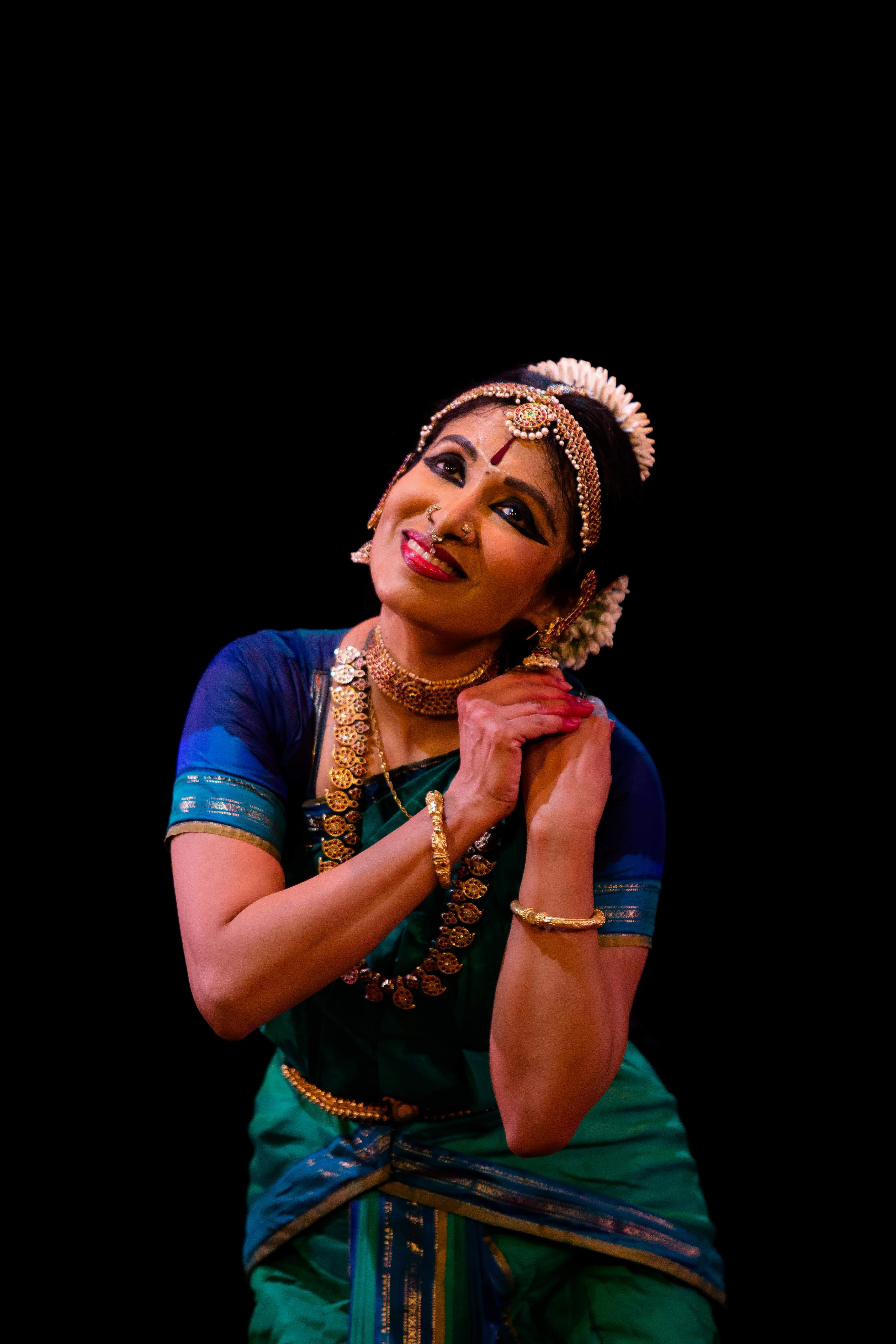
Alarmel Valli (Bharatanatyam) - Music Academy Dance Festival - 2016
I’ve also been fortunate to work with many gurus early on in my career. The generosity of those interactions, and the trust that brings me back for recurring collaborations, quietly reinforces the sense that I’m on the right path — that what I do matters, even if in ways that can’t always be articulated.
In a world where our mobile phones have become recorders of memories, what do you believe is the role of a photographer who brings skill, practice and experience to the table and why should artistes invest in capturing and archiving these moments?
In a world where everyone has a camera in their pocket, the role of a photographer might seem less obvious at first glance. But I believe, now more than ever, the presence of someone who watches with intent — who waits for that one telling moment makes all the difference between merely clicking and truly capturing something that holds emotional weight. A photograph isn’t just a record — it’s an interpretation. It’s shaped by how I observe, what I notice, and what I choose to include or leave out. As someone who has spent years understanding not just the mechanics of the camera but the nuances of performance, I bring a practiced eye-attuned to the rhythm of the body, the quiet gestures, the fleeing expressions. These are things that can so easily be missed, but when captured with care, they become memory markers-moments that still feel alive, even years later.
For artistes, I believe investng in this kind of intentional archiving isn’t just about having good photographs. It’s about honouring the hours of rigour, the lineage they come from, and the work that goes into each performance.
It’s about creating a legacy — not just for today, but for tomorrow’s dancers, researchers, and audiences. Because long afer the applause has faded, it’s the photograph that continues to speak.

